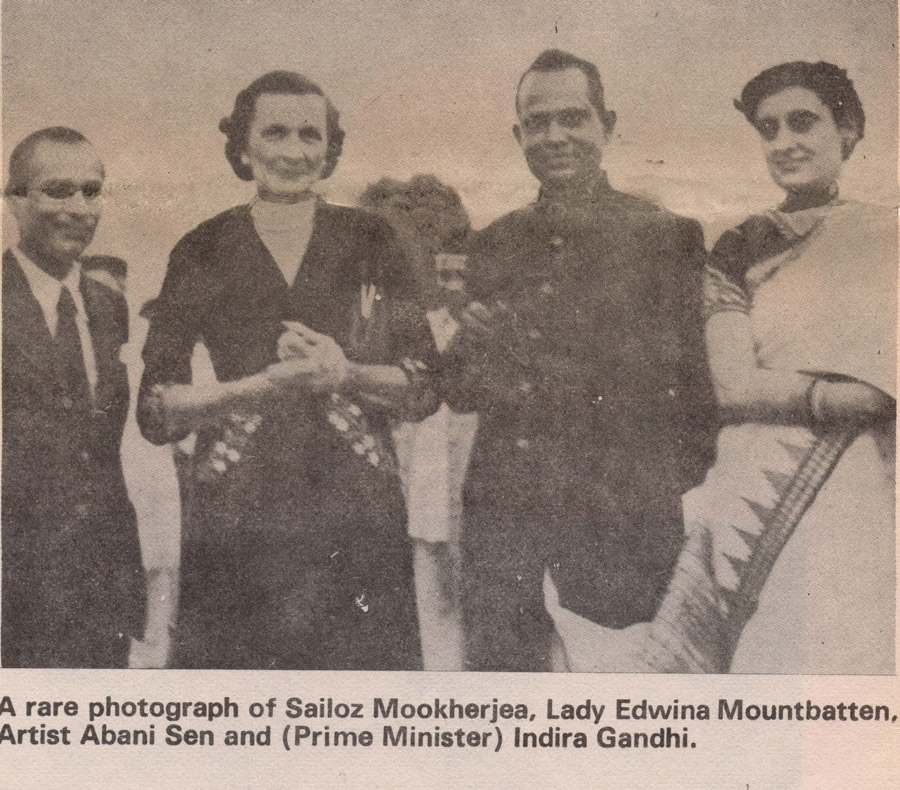
By R. L. Bartholomew - 10 Jun, 2024
The World of Sailoz Mookherjea
Whenever the Gulmohars flower and the Jacarandas underline the blue of the Indian summer, memories of Sailoz Mookerjea will crowd and blur; for Sailoz in life was a continual and colorful blur. And his art was himself, always. Recalling the Sailoz that was, the man, and conjuring up those pictures that he painted, I begin to feel a kind of thirst, a call of the summer of the senses inside me that is a sort of blur. I recall Sailoz with glass in hand, looking over the Gulmohars in Connaught Place. Sailoz in the sunset of sadness that is between shades of the loneliness of the supremely finite artist, always between illusion and reality.
The world passed by Sailoz Mookerjea in the Connaught Place restaurant in those days when drinking in public places was not prohibited - youth and gaiety, figures in money and flesh, men and women who could buy art, but didn’t, those who would never understand it, and men and women who would stop begging if only it were not so profitable. The mercury vapour lamps burned; the redness dimmed, and for Sailoz, the past and the future bubbled like the soda in his whisky. In a world where isms had begun to vie with one another, and the young were beginning to forget the old, Sailoz sat looking over his whisky – at weariness itself. Sunk in a cane chair on the corridor above the shop that sold pastries, sweets, cheese straws, and brown bread, there was this artist in middle age living entrenched in youth. That was Sailoz, almost ten years ago.
If you went up to see him, you had to climb a stairway, the walls of which professed a fresco. Whatever rhythms the band upstairs frisked, a giant cat from the decoration looked at you from behind a motley facade - unwinking, unkind, callous, and preying. I would give anything now to have Sailoz photographed against that cat. Gentle and fragile and birdlike, Sailoz and the cat, it seemed, stood on different walls.
This is speaking sentimentally of the past for it was somewhere between these harsh realities that Sailoz took notice of me for the first time, when I was younger and had just begun to write art criticism as a form of literary exercise, and I knew less of Sailoz, how he was placed as a man and as an artist. I knew one thing then, intuitively - that art criticism, to be real, had to live a life of words. That is the ultimate truth about criticism. I know that Sailoz then knew one thing and that he practised it consistently: he knew that painting, to be real, had to live the life of an inner necessity. He never painted what he believed was beyond him. Sincerity, therefore, came naturally to him.
There was in his art melodies of the Pastoral of Beethoven and also, of the great "Ode to Joy" by Schiller, sung as a crescendo to the abstraction of purer music in the great ninth. I know I am exaggerating. But there is a certain truth when we think of the best years of this considerable artist’s life spent before the brass of the restaurant’s band. And in all these years, Sailoz did not turn bitter in heart.
Whether Sailoz painted or stood on both feet or had to be helped home by kinder friends, the Gulmohars blossomed every year punctually according to nature’s calendar of change. In the understanding of the phenomenon, among the artists of India, alive or of his present company, Sailoz had few equals. Sailoz did not paint fields, flowers or human figures. Sailoz painted his feelings for these things felt as a factor in emotion. His landscapes are not the picnickers’ delight. The few Rajasthan women - faceless, but not formless, and clad in just that rhythm of India that conceals and reveals – sit brooding beside a well, in a congregation of quiet. The trees fan outwards, a mellow locale of recollection in tranquillity – a blur of movement, etched by the palette knife and dotted with the sparse embers of Sailoz’s essentially sombre sensibility. The sky sweeps back; the land is a blur: and the figures are people of an awakening dream.
Sailoz’s idiom in painting was founded on a thorough study of folk art in India. It is apparent that he charted for himself certain schools of Pahari painting, Kangra, and Rajput, particularly. It is apparent also that he owed considerably to the later painting of Amrita Sher-Gil (whom he must have loved, for Sailoz loved all lovely things). It is apparent that Matisse most powerfully influenced his work in the simplification of colour and human forms. But Sailoz would not have been Sailoz if in all this he did not have a measure of his undiluted self.
There is a portrait of Sailoz painted by Biren De - a study, in semi-profile alertly done. The man has his chin slightly up, a dreamer every inch of him, and the best of Sailoz and Biren have gone into that work. It will become a characteristic of his sober sight. “I have works,” he went on. “Come. Quietly I am painting. Same landscapes. You will see.”
I was older by three years, Sailoz was older by three seasons; the landscapes were mistier: there was a veil of night over those fields of Tughlakabad. Like that of his own beloved Van Gogh, his style was more cryptic, more in the shorthand of the sure sensibility. Sailoz had the old “kiss” theme re-done; and strangely enough, reflections in the water were some of his themes. Music, too, in the form of a Shehnai player, piped for Sailoz the “still sad music of humanity.”

